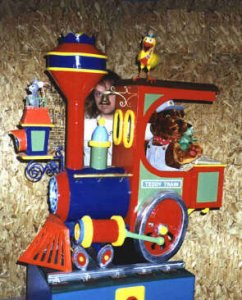I was perplexed by trying to design a helix. I tried drawing a circle and then bending a ruler around it with poor results. This affected my calculations for the grade.
I am pleased to say I have found the formula for finding the circumference of any circle, and I thought I would share this information.
The formula uses the mathematical principal of Pi.
Pi being 3.1459
So if you want to know the circumfrance of a 42" diameter circle, the formula would be:
3.1459 x 42" = 131.94678", or Pi x 42".
If you only know the radius of the circle then the formula would be:
2 x 3.1459 x 26" = 163.36268"
My wife says you can round off Pi to 3.14 and this won't change the outcome that much for our purposes.
I hope this helps.
I am pleased to say I have found the formula for finding the circumference of any circle, and I thought I would share this information.
The formula uses the mathematical principal of Pi.
Pi being 3.1459
So if you want to know the circumfrance of a 42" diameter circle, the formula would be:
3.1459 x 42" = 131.94678", or Pi x 42".
If you only know the radius of the circle then the formula would be:
2 x 3.1459 x 26" = 163.36268"
My wife says you can round off Pi to 3.14 and this won't change the outcome that much for our purposes.
I hope this helps.


